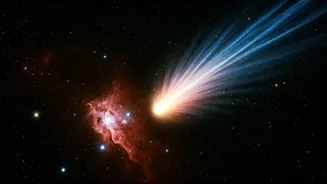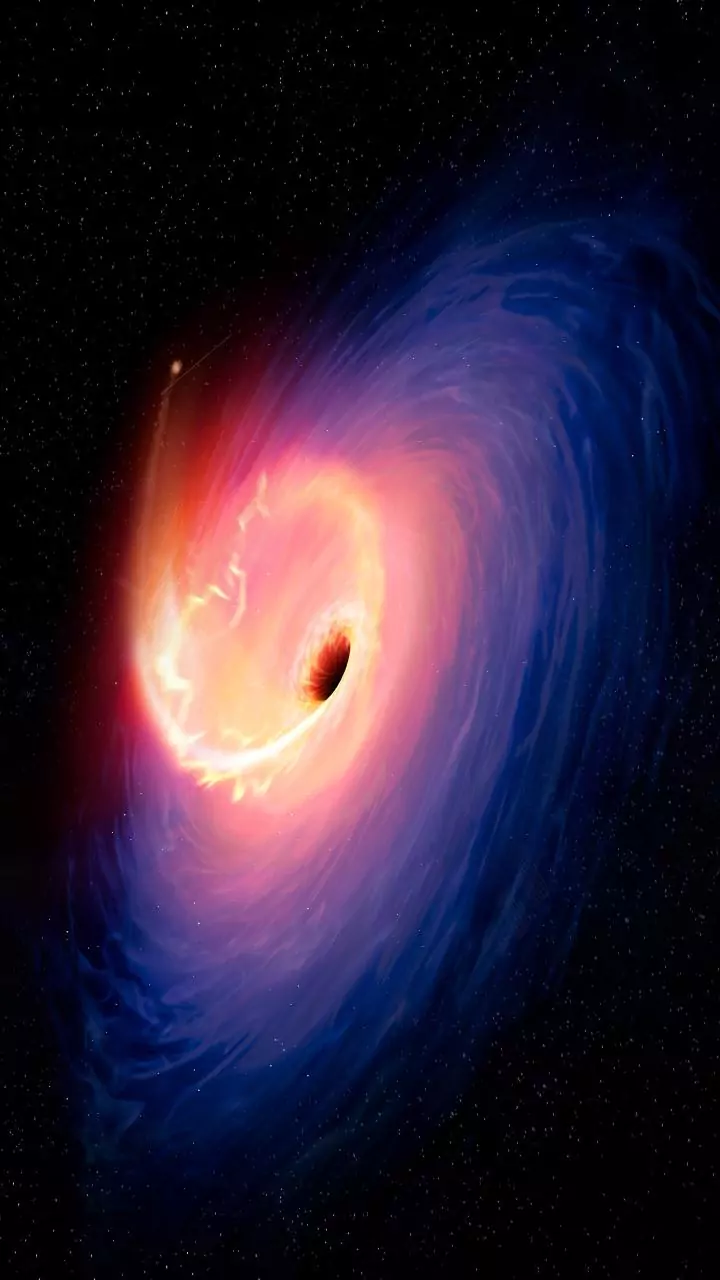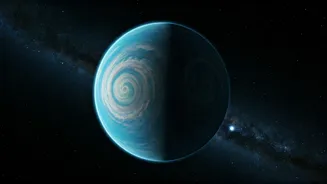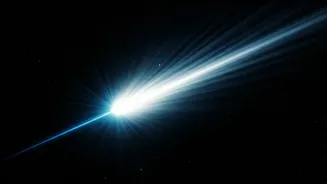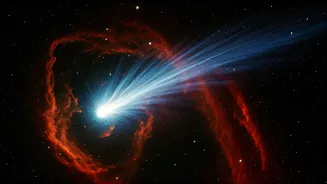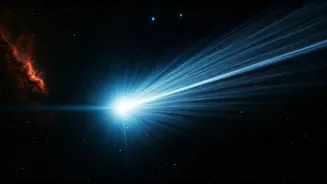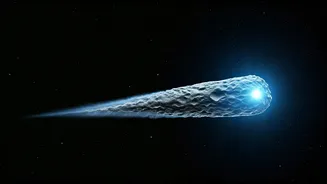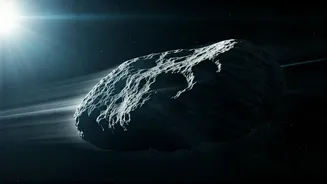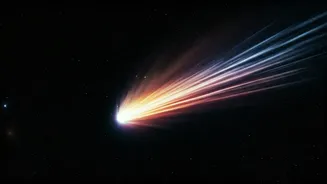Discovery and Journey
The remarkable journey of interstellar comet 3I/Borisov commenced with its discovery, which unfolded as a pivotal moment in astronomical history. The comet's
arrival marked a rare opportunity to study a celestial body originating outside our solar system. Its path, speed, and origin became the focus of intense scientific scrutiny. The comet's trajectory provided clues to its birthplace and the conditions it experienced during its formation. As it ventured through space, scientists meticulously observed its movement and characteristics. The comet's visit allowed for a deeper understanding of the composition and nature of interstellar objects, enhancing our knowledge of the cosmos. The event sparked curiosity and renewed interest in the study of celestial bodies, highlighting the vastness and mystery of space.
Observing the Comet
To observe the interstellar visitor, astronomers employed advanced techniques and tools. Telescopes played a vital role, allowing for the observation of the comet's intricate features and behavior. Careful timing and precise tracking were crucial for capturing the celestial object's transient appearance. Observations were conducted in various wavelengths of light, offering a comprehensive view of its composition and characteristics. Specialized instruments were used to analyze the comet's tail, jets, and the gases it released. Scientists studied its brightness, its changing appearance, and its interaction with solar radiation. Through detailed observations, they obtained valuable insights into its structure, revealing the nature of the interstellar interloper. The ability to monitor and analyze the comet’s movements allowed scientists to extract data, which expanded knowledge of space and its constituents.
Cosmic Messenger or Comet?
The nature of the comet, whether it was solely a comet or something more, became a subject of debate among scientists. Evidence of its cometary activity, such as jets and a tail, was apparent. These features provided a glimpse into its composition. The comet's unusual activity prompted scientists to explore its composition to better determine its origin and history. The investigation of its composition played a crucial role. Researchers focused on the presence of water ice, dust particles, and other materials. Analyzing these clues was essential for understanding the conditions in which the comet formed. Through this comprehensive examination, scientists worked towards determining the true nature of this remarkable celestial visitor. The ongoing analysis and discussion contributed to an enhanced understanding of comets and the mysteries of interstellar space.
Unusual Activity Noted
Comet 3I/Borisov exhibited unusual activity throughout its passage, making it a subject of fascination for astronomers. The presence of jets and an impressive tail indicated that the comet was releasing gas and dust. Scientists observed the way it interacted with solar radiation. The activity of the comet offered valuable information about its composition and the materials it contained. Detailed observations of the jets and tail revealed the composition of the cometary material. As the comet approached the sun, this behavior intensified, presenting a unique opportunity to study its volatile nature. Analysis of these features helped scientists uncover clues about its past and its current state. The unusual activity captured the attention of the scientific community and highlighted the uniqueness of this interstellar interloper. The activity served as a critical element in the study and improved our knowledge of the comet and the cosmos.
Size, Age, Composition
Determining the size, age, and composition of Comet 3I/Borisov provided crucial insights into its origin and formation. Scientists meticulously measured the comet’s dimensions. They estimated its age by analyzing its composition and understanding its interaction with solar radiation. Analyzing the comet’s composition provided clues about its origin, as the materials were from outside our solar system. The presence of dust particles and gas within the comet’s nucleus was assessed by researchers. The abundance of water ice and other volatile substances offered valuable clues about the conditions in which the comet originated. The analysis of these features provided important insights into the comet's composition and structure. The size, age, and composition helped astronomers unveil details about the conditions in which it was created. This detailed understanding helped place the comet within the broader context of interstellar objects.
Controversy and Speculation
The arrival of Comet 3I/Borisov spurred discussions and speculation. The comet's interstellar nature and unique features gave rise to intriguing questions regarding its origin. Some scientists discussed its physical properties and its ability to traverse interstellar space. The comet's composition and activity stimulated intense debates about its origins. Researchers discussed whether it was a regular comet or a unique interstellar object with properties. The possibilities surrounding its formation in different cosmic environments sparked interest in the scientific community. The mystery of its formation and the journey it had undertaken created an opportunity to enhance our knowledge of space. Such discussions and debates highlighted the complex and mysterious nature of interstellar objects, and they fueled scientific explorations into the origins of celestial bodies.
